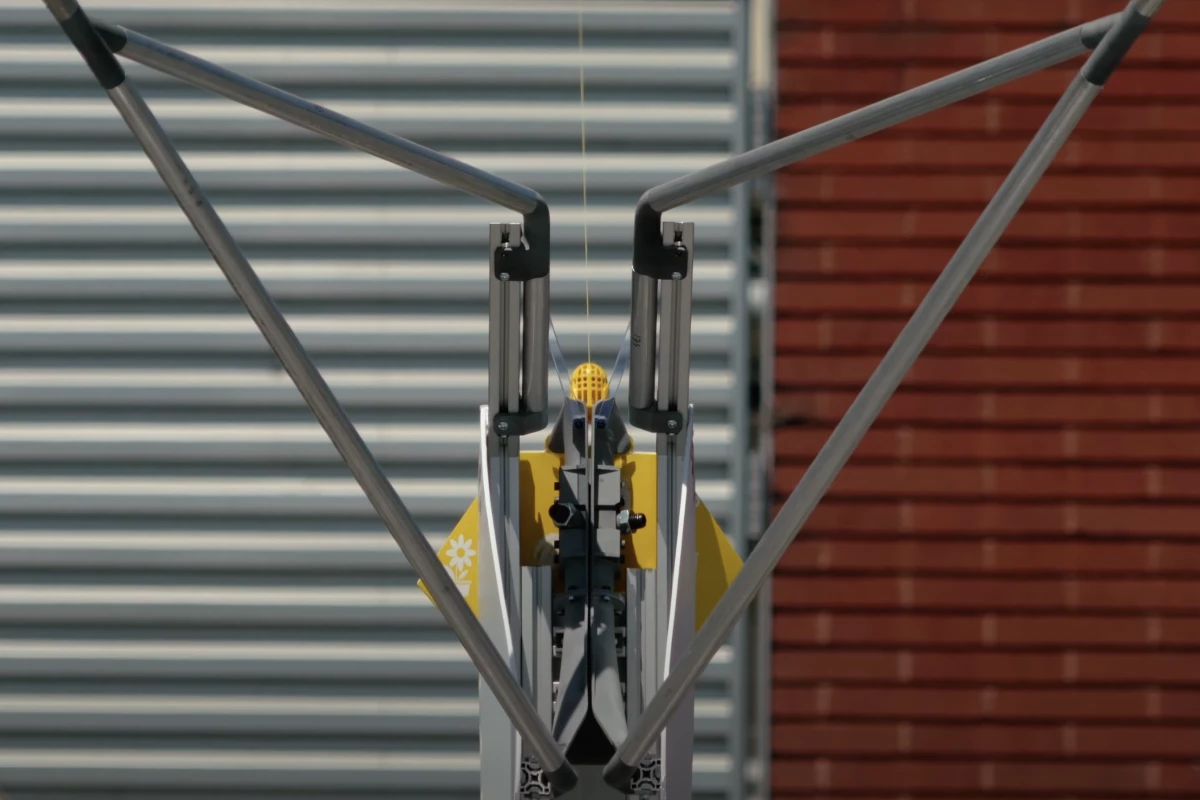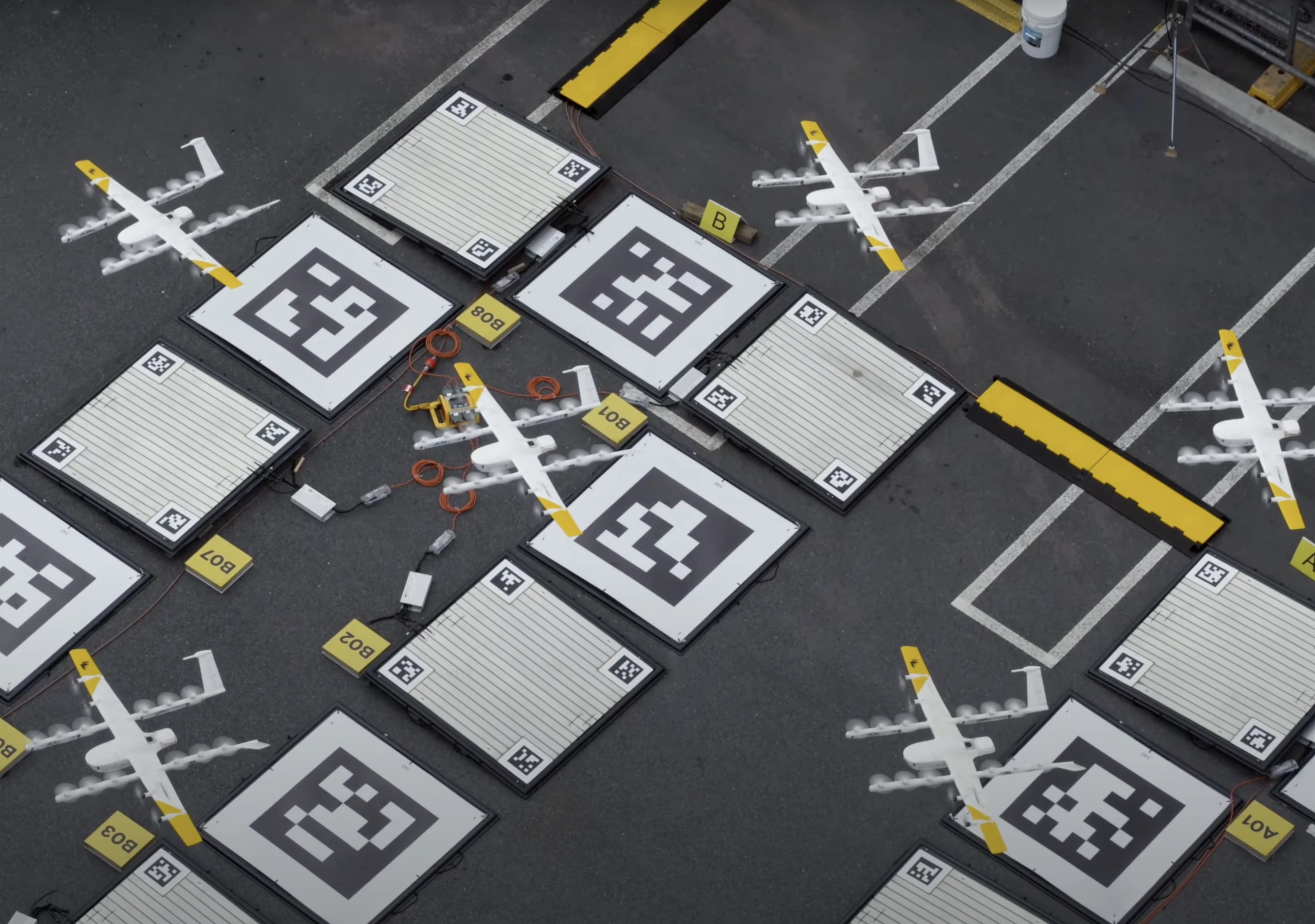Food vendors won't have to wait around for Wing's delivery drones to come pick up an order. The company has released video of new "AutoLoader" stations that'll hang onto boxes waiting for a skyhook-style pickup from the next available drone.
In what the company describes as a "curbside pickup" style operation, the AutoLoader is designed to make drone pickup orders quicker and easier for vendors, who will no longer have to stop what they're doing to run out and manually hang a bag on a drone when it shows up.
They're odd things to look at, taking up roughly a car park space. Each has a relatively small loading mechanism on it, as well as a place to hang an order. The bulk of the device is in a pair of long guide arms, which allow the lift-and-cruise-style drones to hover overhead and drop a line down into a V-shaped area, recognizable to the drones by QR codes painted on the ground, that brings the line into the loading mechanism.
Once there, the station transfers the order onto the drone's hook, at which point it's up and away without any need for a worker to intervene. The AutoLoaders don't use any power, and they don't need a data connection. Have a look toward the end of the video below.
Wing is going to roll this out over the next 12 months as part of a broader ride-share-style delivery network logistics system. By 2024, the company says it hopes to be ready to manage millions of deliveries using vast fleets of drones spread across cities, all routed efficiently between pickups, dropoffs and auto-charging stations – significantly faster and cheaper than ground delivery services.
Of course, being ready is one thing, and being out there doing it is another. While Wing and many other companies have already run a number of small-scale pilot programs in many areas around the world, the entire drone delivery industry is more or less stuck in beta until regulatory authorities work out how to make them legal in a framework that works for everyone.
This video from The Federalist Society does a decent job of explaining some of the issues as they pertain to US operations.
So as it stands, the technology looks terrific, and just about ready to go, but there's no real indication when this sector will finally get the green light.
Source: Wing






